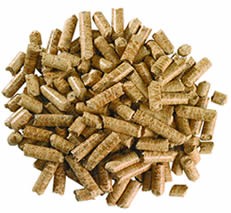Wood pellets are increasingly used as an alternative, renewable, and CO2 neutral fuel in industry, public buildings, and in homes. They are produced from sawdust, crushed wood chips and corn starch under high pressure.
Under storage conditions carbon monoxide (CO) is generated, representing a lethal danger for animals and human beings if an effective ventilation is lacking, even more because CO is odorless and cannot be sensed. The volume of stored pellets (in containers) and the ambient temperature is critical for the amount of CO generated.
Fatal CO poisoning from this source has been reported in the medical literature (Gauthier S et al. Ann Occup Hyg. 2012 Aug;56(7):755-63), and the generation of carbon monoxide and other harmful gases and vapors (such as aldehydes, methanol, volatile hydrocarbons) has been investigated (Svedberg 2004 , Svedberg 2008).
These toxic gases are the result of general decomposition in drying wood, mainly at elevated temperatures. The big surface of the wood pellets facilitate evaporation.
Recommendation: Containers for wood pellets should be secluded and separated from housing and working space. Effective ventilation must be in place. In doubt, measurement of carbon monoxide concentration is advised in the containers and surrounding space. The entering of containers without proper prior aeration is strongly discouraged.
Hugo Kupferschmidt
Christine Rauber-Lüthy
30.12.2014
Latest literature


